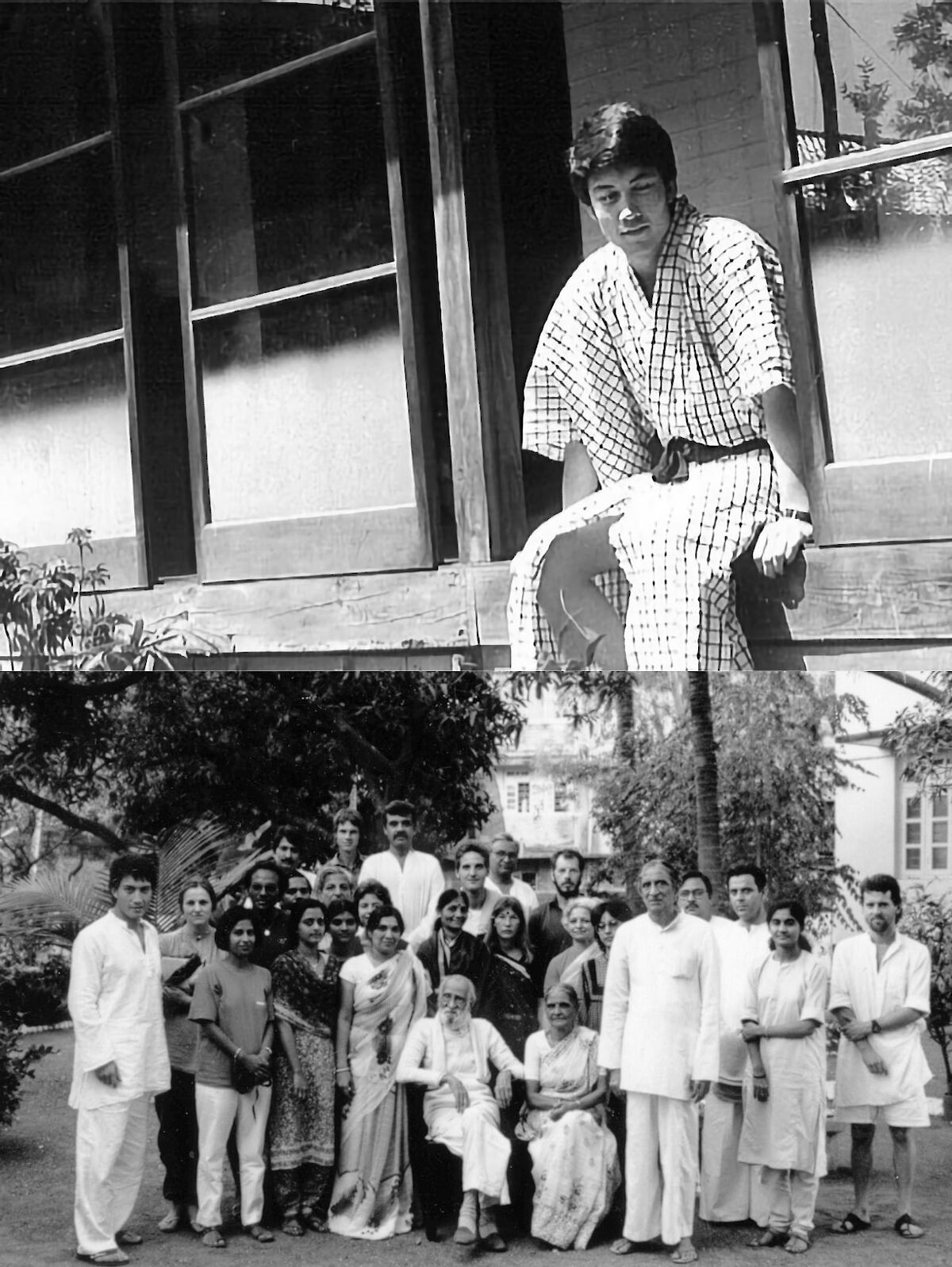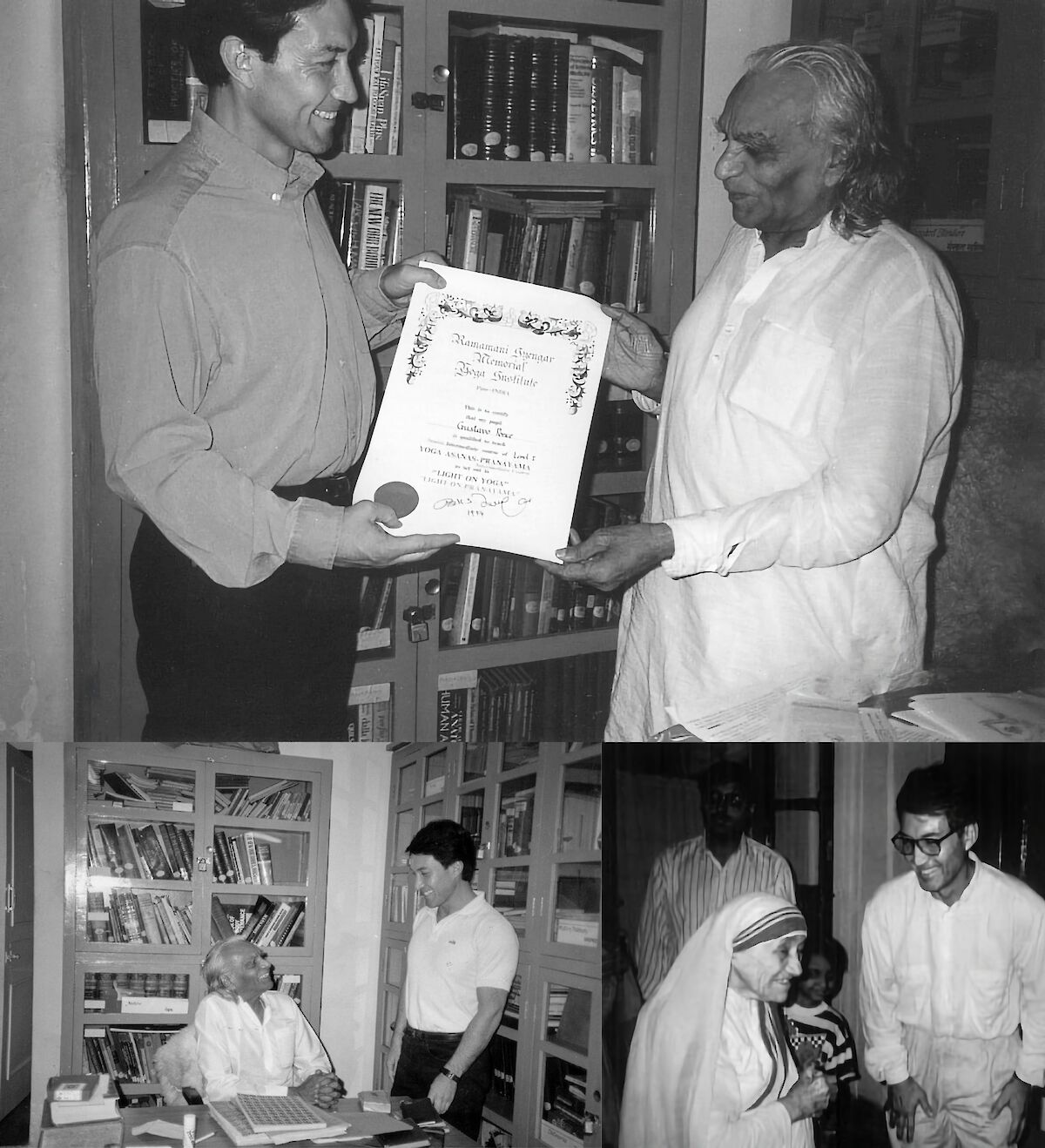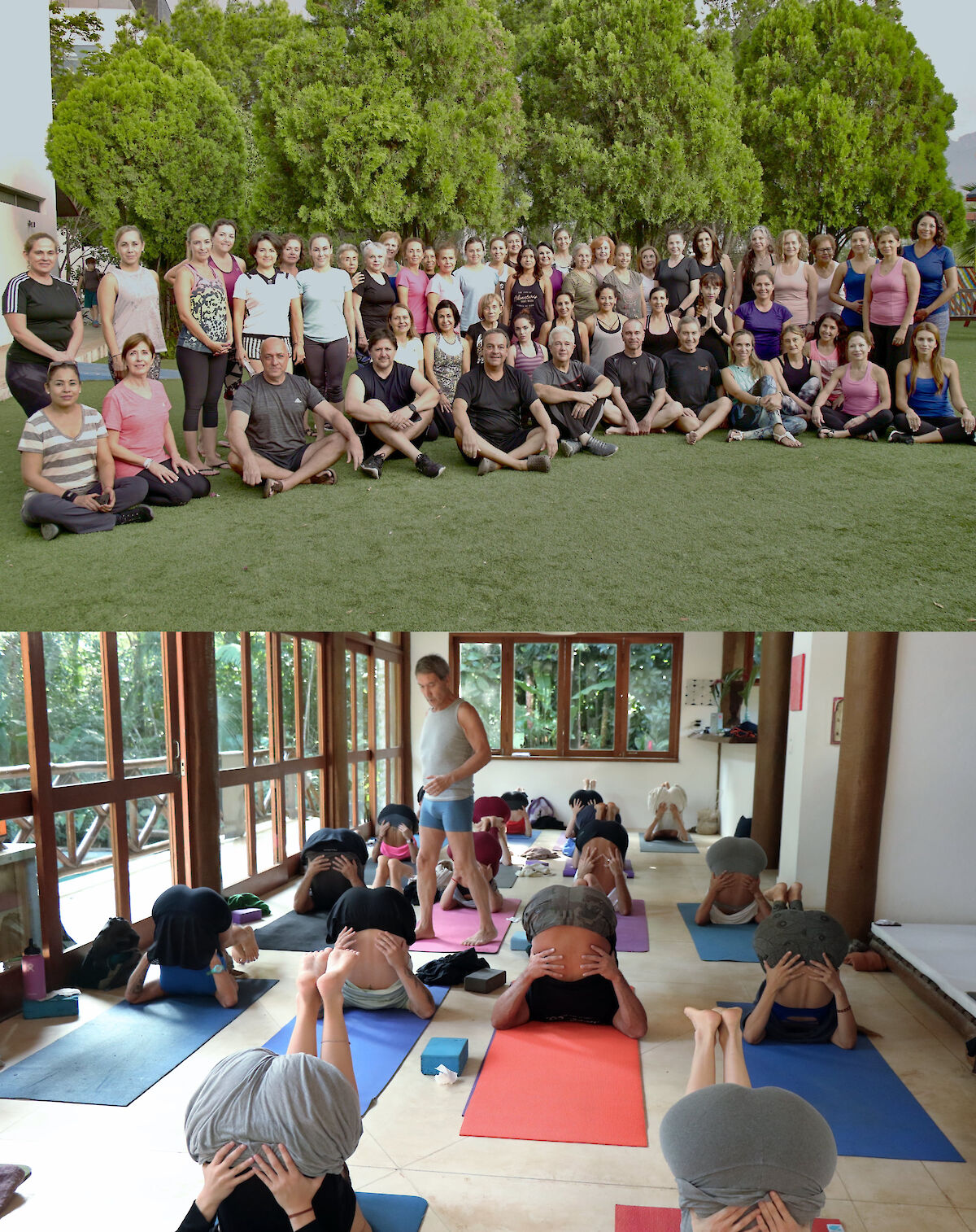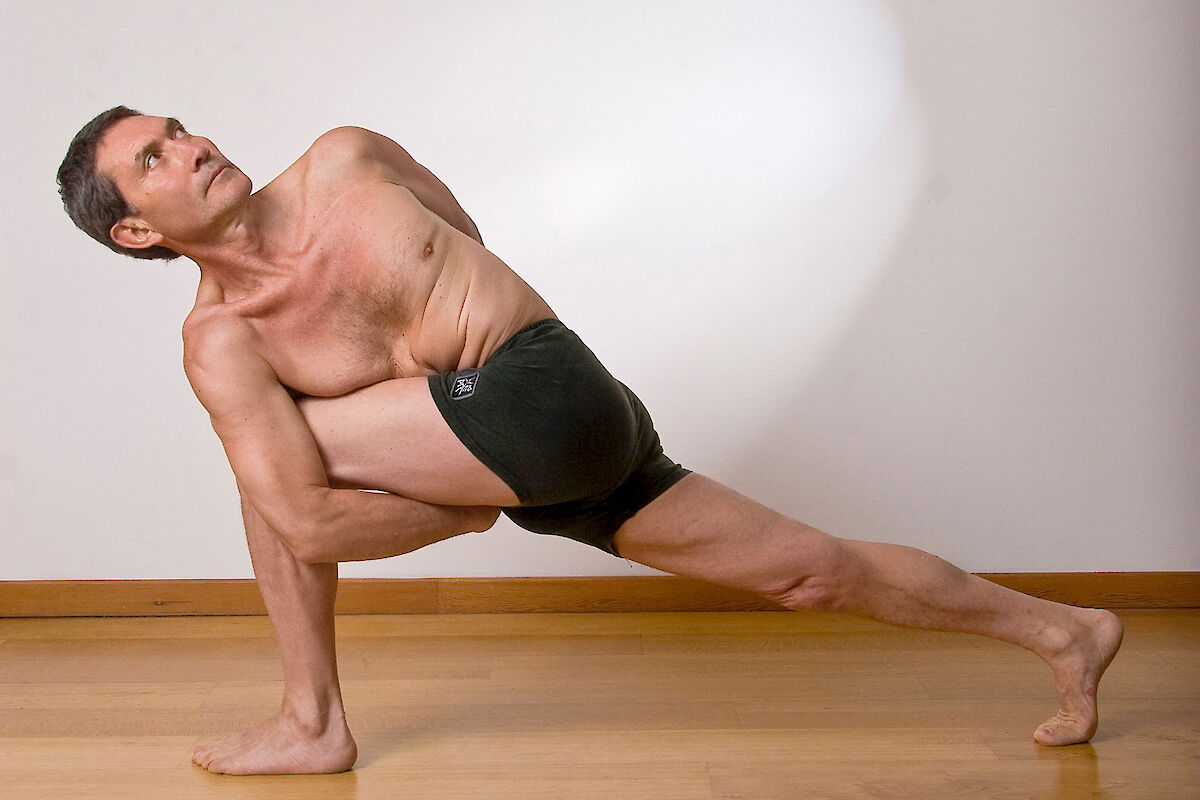From Chile to Japan through India
When he was 11, Gustavo Ponce found in a second-hand book store a book that made him dream and gave a definitive direction to his young life : Yoga and Sport by the Indian Selvarajan Yesudian and Hungarian Elizabeth Haich, the couple who opened the first Hatha Yoga school in Europe. This book has accompanied him ever since, though he has already lost many pages.
In early 1968, he left his native country, Chile, by bus. In Argentina he boarded a cargo boat that took him to Kobe, Japan, 4 months later.
Japan undoubtedly left an indelible mark on him. He owes to this country almost everything he became afterwards, even if it is not much, as his father would say. The reason that made him travel to Japan, the farthest country from Chile, was his love for Japanese martial arts, which he started practicing with Japanese friends almost at the same time he began with yoga. When he arrived in 1968 with little knowledge of the language, zero English, just a bit of French that was useless in Japan, and without contacts or money, he tried desperately to find a job. The first job he got was in a gasoline station.
After that he took on many jobs, from teaching Spanish to being a Spanish-Japanese-Spanish interpreter and translator, and working in television, where he had his own program, a sort of late-night show.
Gustavo lived in Japan for a total of 20 years. Since he left, he’s come back to the country of the Rising Sun many times. In 1971 he went for the first time to Europe by boat and train all the way from Yokohama to Helsinki, passing through the cold steppes of Russia, and Moscow. After many adventures in the old continent he returned in 1972 by land and sea from Italy to Japan. In India he made a stopover of 6 months: he found a beautiful family who adopted him and introduced him to the Theosophical Society of Madras (Chennai), founded by Madame Helena Blavatsky in 1878, where he took his first formal yoga lessons.
In his early days, in an Aikido class he met who would be his first yoga teacher in Japan, Per Winther, a Norwegian yogi who had lived 17 years at the foot of the Himalayas. They became friends. Per advised him to travel to India to deepen his studies with Shri Yogendra, a legend in India. At that time, in 1985, he was already working as a commercial attaché at the Embassy of Chile.

Meeting many masters while becoming Ambassador of Chile to Japan
When he was at the Ashram of Shri Yogendra, he heard for the first time about B.K.S. Iyengar, the lion of Pune, as people used to call him because he was very strict. Gustavo became very curious, so during his holidays the next year, he went to see him and became his pupil until 2000. A few years earlier he had opened his own center in Chile, Yogashala, where he was the first person to teach the Iyengar method in Chile.
While he was a student of Mr. Iyengar, he heard about Pattabhi Jois and his method, Ashtanga Vinyasa Yoga. Of course, he went to see him and became his student in 1992. Along with Iyengar Yoga, he taught a few years later Ashtanga Vinyasa in his school in Chile, introducing this method in his country.
In 1987 he became Ambassador of Chile to Japan. This new position allowed him to travel more around the world, and of course to India. He held this position until March 1990, when he decided that he wanted to explore new horizons and returned to Europe to work as CEO of a multinational company in Belgium.
From Belgium it was rather easy to travel to India where the company had two offices. He continued attending the Iyengar and Jois schools, but also went to visit the Yoga Mandir, the school of T. Krishnamacharya and his son Desikachar in Chennai (Madras).
As the company had an office in Calcutta, every time he went, he paid a visit to Mother Theresa, a real Karma yogini.
Throughout the years he kept going to India where he met many masters, unfortunately unknown in the west; maybe it is better that way, because fame can destabilize anyone. In the West he also met many teachers whom he had met in India as they were his classmates.

GPBALANCE, his main focus
While setting back in Chile and putting in motion both his school Yogashala and Canal Om, the retreat center.
In 2003 he was diagnosed with a Non-Hodgkins Lymphoma, a very aggressive type of cancer to the immune system. He was given just a few years to live. During the 8 months that the chemotherapy lasted, Gustavo began to put together a system of yoga to energize the body and mind, Prana Shakti, the original foundation of GPBALANCE.
In October 2006, he got an invitation from his friend Pedro Kupfer to show his method in front of many people in Brazil. After that event, he got many invitations to teach at different venues, both in Brazil and other South American countries and Europe.
From 2007 he began to develop and teach his own yoga methods based on the teachings of all his masters. First, he developed his own interpretation of Iyengar Yoga: Axis Yoga; then Dynamic, a softer version of Ashtanga Vinyasa; and finally Sattva Yoga, an original sequence of 60 postures done with the wall (Chikitsa) and the same 60 postures done in a flowing manner (Vinyasa). This latter method has become very popular in Brazil where he has formed many teachers.
His focus now is on GPBALANCE, a method he developed firstly to heal himself from his physical, but mostly psychological injuries. He believes that there is one yoga for each stage of one’s life. And now is the time of GPBALANCE, for every man and woman above 35 who wants to age well and gain vitality, strength and energy.

